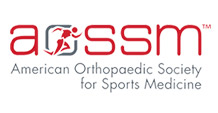

- Self-Replicate
- Differentiate into
multiple tissues - Bone
- Cartilage
- Muscle
- Fat
- Fight Apoptosis
(Cell Death) - Reduce Inflammation
News Updates
Stem Cells Treatments Show Promise in MS
Source: Managed Healthcare Executive
Violaine Harris, Ph.D., a senior research scientist with Tisch MS Research Center of New York, discusses new research that shows stem cell treatments can improve disability in patients with MS.
Protein In Hair Follicles May Hold Cure For Baldness – And Maybe More
Source: IFL Science
Stem cell therapy has been touted as a cure for so many conditions. Now it's time to add another one to the list.
Bone marrow aspirate concentrate augmentation of allograft may benefit ACL reconstruction
Source: Healio
Bone marrow aspirate concentrate augmentation of the bone-patellar tendon-bone allograft during ACL reconstruction may yield greater signal intensity scores on MRI at 3 months postoperatively, according to published results.
Advances in Stem Cell Therapies for Rotator Cuff Injuries
Source: frontiers in Bioengineering and Biotechnology
Rotator cuff injury is a common upper extremity musculoskeletal disease that may lead to persistent pain and functional impairment. Despite the clinical outcomes of the surgical procedures being satisfactory, the repair of the rotator cuff remains problematic, such as through failure of healing, adhesion formation, and fatty infiltration. Stem cells have high proliferation, strong paracrine action, and multiple differentiation potential, which promote tendon remodeling and fibrocartilage formation and increase biomechanical strength.
Nonoperative and Operative Soft-Tissue and Cartilage Regeneration and Orthopaedic Biologics of the Foot and Ankle: An Orthoregeneration Network (ON) Foundation Review
Source: PubMed
Orthoregeneration is defined as a solution for orthopaedic conditions that harnesses the benefits of biology to improve healing, reduce pain, improve function, and optimally, provide an environment for tissue regeneration.
Allogenic perinatal tissue for musculoskeletal regenerative medicine applications: a systematic review protocol
Source: Springer Link
Although autologous sources are promising, there is a wide range of limitations with the treatment, including the lack of randomized controlled studies for orthopaedic conditions, donor site morbidity, and highly variable outcomes for patients. Allogenic sources bypass some of these shortcomings and are a promising source for orthopaedic regenerative medicine applications.
Leukocyte-poor PRP injections during, after rotator cuff repair may reduce retear rate
Source: Healio
Repeated leukocyte-poor platelet-rich plasma injections during and after double-row suture-bridge arthroscopic rotator cuff repair may reduce the retear rate and improve Goutallier grade and clinical outcomes, according to study results.
Read More

 For Appointment
For Appointment



 Testimonials
Testimonials





